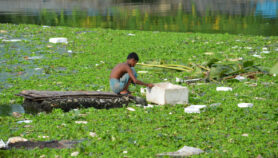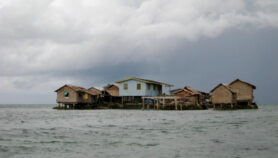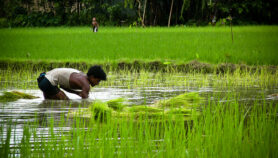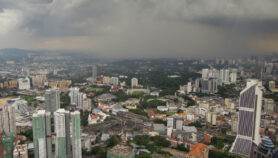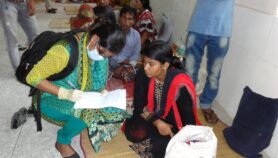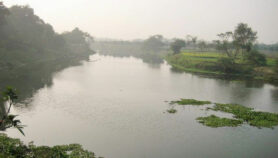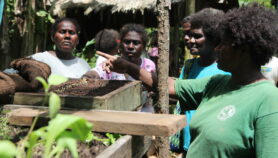Send to a friend
The details you provide on this page will not be used to send unsolicited email, and will not be sold to a 3rd party. See privacy policy.
[MANILA] Scientists in the Philippines have come up with an ingenious way of making productive use of the water hyacinth that clogs the nation’s waterways, by treating the fibre from the plant’s stems in a way that makes it sufficiently soft and flexible to be used in up-market clothes.
The water hyacinth is one of a number of common plants, ranging from pineapple and banana to indigenous ones such as abaca, saluyot and maguey, from which researchers from the Philippine Textile Research Institute (PTRI) of the Department of Science and Technology have developed both natural dyes and fabrics.
Their hope is to provide not only a way of using waste plant material — as well as a boost to the country’s ailing garments and fashion industries — but also a potential source of income for rural communities.
At a fashion show that the research institute organised in Manila early this month (8 February), the versatility of the plant-derived fibres was demonstrated in clothes ranging from office uniforms and casual clothing to wedding gowns and cocktail wear.
Nora Mangalindan, head of PTRI’s research and development division, said that the fashion show was intended to show manufacturers that fabric made from tropical plants can compete in terms of both comfort and style with more conventional materials.
"The fabrics are enzyme-treated so they are comfortable to wear, and not prickly as the earlier versions used to be, and no longer stiff, so they can easily adjust to designs," Mangalindan said.
Anthony Cruz Legarda, a New York-based designer who acted as director of the PTRI fashion show, said that the appeal of what is being called Philippine tropical fabric (PTF) lay in its uniqueness.
"The current buzzwords are eco-friendly, sustainable, indigenous and low carbon footprint," he said. "So why not ride the waves?"
At present, the biggest drawback is a lack of availability, since few manufacturers are yet producing the fabrics. In an attempt to boost demand and induce production, the government is considering fitting out more than a million of its employees with uniforms that were included in the fashion show.
The researchers hope that demand for the new textiles will create a revenue-generating industry from the water hyacinth, which at present creates a big problem for many localities by causing clogging of river channels that often leads to flooding.
PTRI has also been in discussion with two large pineapple producers, Dole Philippines and Del Monte, both of whom have expressed interest in the idea of converting pineapple leaves — which are discarded as farm waste — into fabric.
The companies are looking at ways that the families of their farm workers could become involved in producing and processing PTF through their cooperatives.




